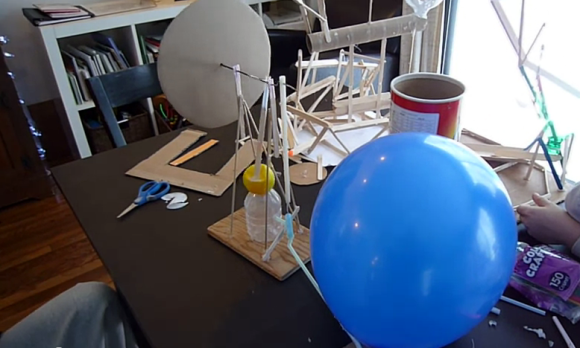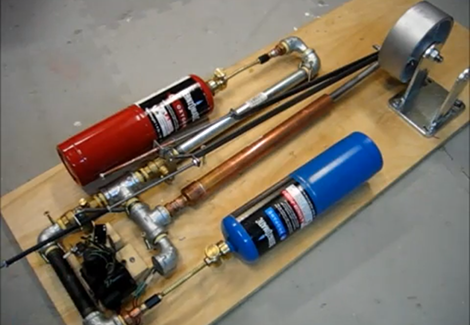[MacGyver] [Lou Wozniak] is on a mission to build an internal combustion engine using only hardware store parts. What you see above is his third attempt at it. Depending on your hardware store this may have ventured outside of what they sell because [Lou] switched over to using gasoline. But the first two attempts were powered by a propane torch fuel canister.
Unfortunately it still isn’t running. But the demo below makes us think that he’s really close. Timing is always touchy and that seems to be what is causing the problems. He makes use of a lot of plumbing fixtures. At the right you can see the parts (including a peanut butter jar) which make his carburetor with a valve pointing straight up as the choke. The fuel and air mixture moves down through the pipe to the cylinder and valve assembly where it is ignited by the black grill igniter module. His custom cut plywood gear moves with the fly-wheel. It triggers his improvised spark plug by using a bit of wire to pull on the leaf switch.
We feel like he’s so close to getting this up and running. If you have any advice on where he might be going wrong [Lou] welcomes your input.
Continue reading “Building An Internal Combustion Engine From Hardware Store Parts”

















